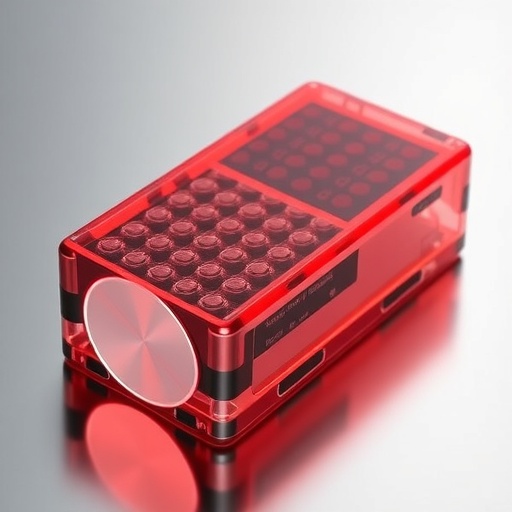In recent years, the quest for more efficient energy storage systems has gained monumental significance. The rise of lithium-ion batteries has transformed the landscape of energy storage for consumer electronics and renewable energy applications. However, concerns regarding the sustainability and environmental impact of lithium have prompted researchers to explore alternative battery technologies. One of the most promising candidates for the next generation of batteries is calcium-ion technology. The article by Singh, Ahmed, and Formanova, published in the journal Ionics, presents a groundbreaking computational study on the use of boron-carbide B₃C₃ nanosheets for intercalation in calcium-ion batteries.
Calcium, abundant and less toxic than lithium, offers a compelling alternative for charge carriers in battery systems. The remarkable electrochemical properties of calcium have sparked interest in its potential application in energy storage solutions. However, the challenge lies in the development of suitable materials that can facilitate efficient calcium ion intercalation and de-intercalation processes. This study takes a significant step in addressing these challenges by examining the role of boron-carbide nanosheets in enhancing the performance of calcium-ion batteries.
Boron carbide (B₃C) is a material known for its exceptional hardness, chemical stability, and capacity to accommodate differing ion sizes. Its unique structure, characterized by a two-dimensional nanosheet formation, allows for facile ion intercalation. In this study, the authors utilized advanced computational methods to simulate the intercalation mechanism of calcium ions within the boron-carbide B₃C₃ nanosheets. The findings reveal intricate details about the atomic interactions and spatial arrangements that occur during calcium ion incorporation into this material.
The computational models developed by the researchers provide insights into the thermodynamic stability of calcium ion intercalation in boron carbide nanosheets. By systematically analyzing different configurations and charge distributions, the study elucidates the energy barriers associated with the insertion and extraction of calcium ions. Understanding these fundamental interactions is crucial for tailoring nanosheet materials to optimize battery performance. The ability to manipulate these properties could lead to batteries with faster charge and discharge rates, ultimately increasing their practicality and appeal in real-world applications.
Moreover, the authors compared the electrochemical properties of boron-carbide B₃C₃ nanosheets against traditional cathode materials used in calcium-ion batteries. This comparative analysis metrics indicate that boron carbide significantly outperforms several commonly utilized materials. Through first-principles calculations, the study demonstrated that B₃C₃ nanosheets exhibited lower energy barriers for calcium ion diffusion, thereby promising enhanced conductivity and ion transport rates.
The authors also highlighted the advantages of utilizing boron-carbide nanosheets, particularly concerning their mechanical strength and thermal stability. Unlike conventional battery materials that can deteriorate under harsh operating conditions, B₃C₃ remains resilient, providing an added layer of safety and longevity to calcium-ion batteries. This durability is particularly essential as battery packs are increasingly integrated into electric vehicles and large-scale energy storage systems, where they may be subjected to variable temperatures and mechanical stresses.
Furthermore, the implications of this research extend beyond just performance improvement. The study emphasizes the potential for commercial scalability of boron-carbide materials within the battery industry. As demand for sustainable energy solutions grows, leveraging less toxic and more abundant materials can shape future developments in batteries. The findings point towards a pathway through which innovative materials science can contribute to solving one of today’s most pressing technological challenges—energy storage.
The process of material selection in battery development cannot be understated. Researchers are continuously searching for the right combination of chemical and physical properties to produce batteries that meet the demands of modern society. This study effectively showcases the significance of computational modeling in identifying optimal materials for calcium-ion battery applications. By elucidating the interactions at the atomic level, the research lays the groundwork for future experimental validation and development.
As the energy landscape evolves, the pressures to enhance battery performance and sustainability become pressing. The deployment of calcium-ion technology powered by materials like boron-carbide may signify a paradigm shift within the industry. Researchers and developers are tasked with converting lab-scale findings into practical, commercially viable products. The study’s innovative approach and promising results will likely stimulate further exploration into calcium-ion technology, enhancing its standings in the battery market.
The implications of this research also resonate within broader initiatives aimed at reducing reliance on finite resources. The transition toward abundant alternatives aligns with environmental goals and reinforces the need for interdisciplinary collaboration among scientists, engineers, and policymakers. By prioritizing innovative materials, the transition to sustainable energy solutions could be accelerated and made more robust.
In summary, the work conducted by Singh and colleagues not only advances our knowledge of boron-carbide nanosheets but is a pivotal step forward in the quest for efficient, sustainable energy storage devices. As research on calcium-ion batteries continues to expand, it is critical that insights from computational studies are translated into practical applications. The convergence of materials science and computational modeling in this domain promises to yield significant advancements that will shape the future of energy storage technologies.
In conclusion, the evaluation of boron-carbide B₃C₃ nanosheet material for calcium-ion batteries represents an exciting frontier in energy storage research. As the study sheds light on the underlying mechanisms for calcium ion intercalation, it opens up new avenues for developing batteries that are both efficient and environmentally friendly. The future of energy storage may well hinge on innovative materials like boron-carbide, establishing a foundation for a more sustainable technological world.
Subject of Research: The application of boron-carbide B₃C₃ nanosheet material for intercalation in calcium-ion batteries.
Article Title: Evaluation of the application of boron-carbide B₃C₃ nanosheet material for intercalation Ca-ion batteries: a computational study.
Article References: Singh, N.S.S., Ahmed, A.Y., Formanova, S. et al. Evaluation of the application of boron-carbide B₃C₃ nanosheet material for intercalation ca-ion batteries: a computational study. Ionics (2025). https://doi.org/10.1007/s11581-025-06867-0
Image Credits: AI Generated
DOI: 28 November 2025
Keywords: Calcium-ion batteries, boron carbide nanosheets, energy storage, computational study, sustainable materials.
Tags: advanced materials for energy storagealternative battery materialsBoron-carbide nanosheetscalcium-ion battery technologycomputational study on battery performanceelectrochemical properties of calciumenergy storage for renewable applicationsenvironmentally friendly battery materialsintercalation and de-intercalation processeslithium-ion battery alternativesnext-generation battery technologiessustainable energy storage solutions





